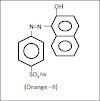RDX OR CYCLONITE OR HEXOGEN OR T4 OR 1, 3, 5 TRINITROHYDRO-1, 3, 5-AZINE or royal demolition explosive or research and development explosive. synthesis,uses,chemical properties,physical properties,history,structure,definition-by study everything.
RDX is a synthetic explosive, so firstly we have to know about explosives.
Definition: “the explosives are substance which is used for destructive purpose”.
Or
“Explosives are substance, when subjected to a mechanical or thermal decomposition; undergo rapid production of large amount of heat and gases”.
Due to a high temperature and pressure is applied to the surroundings giving a destructive effect.
Uses of explosives:
Generally explosives are used for making tunnels, mining of coal, for making dams, and also used for making roads in mountain regions.
CLASSIFICATION:
Explosives are classified as shown below,
1. Low or deflagrating explosives: low or deflagrating explosives are explosives which are quickly not undergo the explosive reaction; they only burn. Reaction rate is slow compare to the high explosives.
2.
High or detonating explosives: high
explosives are substance which are quickly undergo on reaction; reaction rate
is very high compare to the low explosives. High explosives are sub-divided
into two types. (A) Primary high explosives, (B) secondary high explosives.
(A) Primary
high explosive: Primary high explosives are very sensitive; primary high
explosives are used for initiate the explosion of less sensitive secondary
explosives. Primary high explosives are very dangerous to handle. Examples: Tetracene,
pinol, lead styphnate, mercury fulminate, lead azide.
(B) Secondary
high explosives: secondary high explosives are insensitive to flame and
mechanical shock. These explosives are contains very high energy in the form of
gases and pressure. It is give a very great violence when they initiated by
primary explosives.
It is raised up a detonation pressure from 2500 to 350000 atmospheres; and detonation pressure is raised from 15000c to 55000c. Examples: tetryl, ethylene-dinitramine, dinitro-toluene, cyclonite, TNT, picric acid.
RDX (cyclonite, hexogen, or T4 1, 3,
5,-trinitroperhydro-1, 3, 5,-tri-azide)
History: RDX was first synthesized by Georg friedrich Henning’s in 1899. The value of RDX as an explosive is discovered by von-hertz after 21 years (in 1920).
#Georg friedrich Henning: (britannica)
German inventor or entrepreneur
Born : 15 October 1863 in Poland.
Died : 21 February 1945 in Germany (Berlin).
Picture:
RDX is a very powerful explosive. It is a white crystalline solid; which is stable at storage. It is used many times with the mixture of other explosives. RDX was widely used in Second World War. RDX is also called cyclonite, hexogen, or T4. RDX is also known as royal demolition explosive. RDX is not occurring naturally it is synthesized from organic compounds which are known as explosive nitramines.
Chemical profile of RDX
Chemical properties:
IUPAC name: 1, 3, 5,-trinitroperhydro-1, 3, 5,-tri-azide.
CAS number: 121-82-4.
Common name or other name: RDX, cyclonite, hexogen, or T4 it is also called as research development explosive or royal demolition explosive.
Structure formula:
Physical properties:
Molecular formula: C3H6N6O6.
Molecular weight: 222.12gm/mole.
Melting point: 205.50C or 478.6k.
Boiling point: 2340C.
Solubility: water insoluble or less soluble in water but soluble in organic solvents like methanol, ethyl acetate, ether or glacial acetic acid.
Color: white or colorless.
State: crystalline solid.
Odor: unknown odor.
Taste: unknown taste.
Synthesis of RDX:
RDX is prepared by various methods some of them discussed below.
(1) Hale method for synthesis of RDX
Statement: the reaction of
hexamethylene tetramine with the presence of con. HNO3 yields
cyclonite or RDX. The actual reaction is a destructive nitration of
hexamethylene tetramine. By this method we can get 80% yield.
Chemical reaction:
(2) Wolfram
method for synthesis of RDX:
Statement: the reaction of formaldehyde (HCHO) and potassium sulphamate (NH2SO3K) gives respective compound; then reaction of this compound with the presence of 80% HNO3 and 20% H2SO4 yields cyclonite or RDX. With this reaction we get an 80-90% pure product.
Chemical
reaction:
(3)
Ebele-schlessler-ross method:
Statement: in this method reaction of paraformaldehyde and ammonium nitrate in the presence of acetic anhydride at 00C gives cyclonite or RDX. In first step it gives hexamethylene tetramine after that the reaction of hexamethylene tetramine with HNO3 yields cyclonite or RDX. Here reaction type is an addition reaction.
Chemical reaction:
(4)
Bachmann method:
Statement: in this method
the reaction of hexamethylene with nitric acid, acetic anhydride and ammonium nitrate
gives a cyclonite or RDX. Basically this reaction is a combination of Ebele-schlessler-ross
method and hale method.
Chemical reaction:
Uses of RDX (cyclonite, hexogen or t4):
RDX is a powerful explosive; it is used for explosion something.
It is used in combination with other explosives. For example torpex; torpex is a mixture of RDX (cyclonite), TNT, and aluminum. Torpex is used for bombs, for making mines, depth charges and also used in torpedo warheads.
Sometimes it is used for violence for example RDX was widely used in Second World War.
RDX is also used in hand grenade ranges.
It is used in open detonation sites, antitank rocket ranges.
[અસ્તુ:]











![auramine-o dye or basic yellow-2 dye or diarylmethane dye or bis [4-(dimethyl amine ) phenyl ] – methanimium chloride. -synthesis - study everything](https://blogger.googleusercontent.com/img/b/R29vZ2xl/AVvXsEiUuUnnqOn6NnVrilGzE4o8flSLV681i_5-_72hcw9qHsj9ywHb2JdaJmNpo_rfJwH7V-QYSbI9rSvNqX-GqY41rD0bG7bbjRGramR3ffSIbZWp1pggwr-P-KTY91ZDh3i79x8wS9tsckUQ/w100/structure+formula.PNG)

![ATENOLOL [TENORMIN] - medicinal drug -study everything.](https://blogger.googleusercontent.com/img/b/R29vZ2xl/AVvXsEgGTsBGKNaP_tE51nfYj2h3fKdZpO02gO5BeGfItb45xXsb4Gs_pu7ojGb8kc5WTo3e8qZHTxUwGLRwVrpBxzY-Bld1uR2rsmHRYEj3fX0uV4dEYiMa_46l17eSkXpgPnWb3pgGvDGvkqBU/w100/structural+formula+atenolol.PNG)

0 Comments
please do not enter any spam link in the comment box.